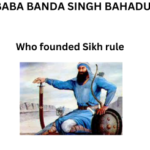India’s wholesale price inflation escalates to 14.55% in March: Basics Explained


India’s March 2022 wholesale inflation to a 4-month high level primarily due to rise in prices of crude petroleum and natural gas, mineral oils, basic metals, etc., due to disruption in the global supply chain caused by the Russia-Ukraine conflict
- The annual rate of inflation, based on wholesale prices, rose to 14.55 percent last month from 13.11 percent reported for February 2022.
- The month over month change in the WPI index for March 2022 stood at 2.69 percent as compared to February 2022
- The primary articles segment, increased at a faster rate of 15.54 per cent in March as compared to 13.39 per cent reported for February 2022.
- In the fuel and power segment, which has a weightage of 13.15 per cent, the rise in inflation was recorded at 34.52 percent from 31.5 percent in February 2022.
- The cost of manufactured products, which has a weightage of 64.23 percent, increased at a faster rate of 10.71 percent from 9.84 percent.
- The growth rate of WPI food index, consisting of food articles from the primary articles group and food products from the manufactured products group, rose to 8.71 percent from 8.47 percent.
- LEARNING FROM HOME/ WITHOUT CLASSES/ BASICS
INFLATION: It is an economic condition in which prices of goods and services rise and the value of money falls or money circulation exceeds the production of goods and services. This rise in the general price level in an economy results in the decline of the currency’s purchasing power over time.
Demand-Pull Effect
Demand-pull inflation occurs when an increase in the supply of money and credit stimulates overall demand for goods and services in an economy to increase more rapidly than the economy’s production capacity. This increases demand and leads to price rises.
Cost-Push Effect
Cost-push inflation is a result of the increase in prices working through the production process inputs.
Fiscal Policy: This policy monitors the spending and borrowing of the economy. When the borrowings are high, it results in increased taxes and increases currency printing to repay the debt.
Monetary Policy: This policy monitors the supply of currency in the market. When there is an excess supply of money, it causes inflation and decreases the value of the currency.
Hyperinflation: This occurs when prices go up by 50% a month. It is a very rare occurrence.
Galloping Inflation: When inflation rises to 10% or more, it causes chaos. The currency loses its value so quickly that businesses and employee income can’t keep up with costs and prices.
DISINFLATION:
It refers to a situation in which prices are brought down moderately from their higher level without any adverse impact on production and employment.
Stagflation occurs when economic growth is stagnant but there still is price inflation.
Core Inflation: It is the rise in the prices of everything except food and energy. That’s because the prices of energy (power and fuel) and food are highly volatile, and therefore, they have been kept out of core inflation.
The nation’s central bank changes interest rates to keep inflation at around 2% to 6%. The RBI will lower interest rates to boost lending if inflation does not reach its target. The RBI will raise interest rates if inflation exceeds its target. Inflation targeting has become a critical component of monetary policy.
Consumer Price Index(CPI) looks at the price at which the consumer buys goods, the WPI tracks prices at the wholesale, or factory gate/mandi levels.
WPI only tracks basic prices devoid of transportation cost, taxes and the retail margin etc. And that WPI pertains to only goods, not services.
The CPI is a measure that assesses the weighted average of prices of a basket of consumer goods and services, such as transportation, food, and medical care, purchased by households.
The Difference between WPI and CPI
| WPI | CPI |
| Calculates the average change in prices of commodities at the wholesale level.( First stage of a transaction) | At the retail level.( Final stage of a transaction) |
| Data published By: Office of Economic Advisor (Ministry of Commerce & Industry) | Central Statistics Office (Ministry of Statistics and Programme Implementation) & Labour Bureau |
| Covers Goods only | Goods and Services both |
| Manufacturers and wholesalers (Producer Level) | Consumers (Consumer Level) |
| Manufacturing inputs and intermediate goods like minerals, machinery basic metals, etc. | Education, communication, transportation, recreation, apparel, foods and beverages, housing and medical care |
| Base Year:2011-12 | 2012 |
In April 2014, the RBI had adopted the CPI as its key measure of inflation.( Urjit R. Patel Committee report recommendations
INFLATION: It is an economic condition in which prices of goods and services rises and value of money falls or money circulation exceeds the production of goods and services.
DISINFLATION: It refers to a situation in which prices are brought down moderately from its higher level without any adverse impact on production and employment.





0 Comments